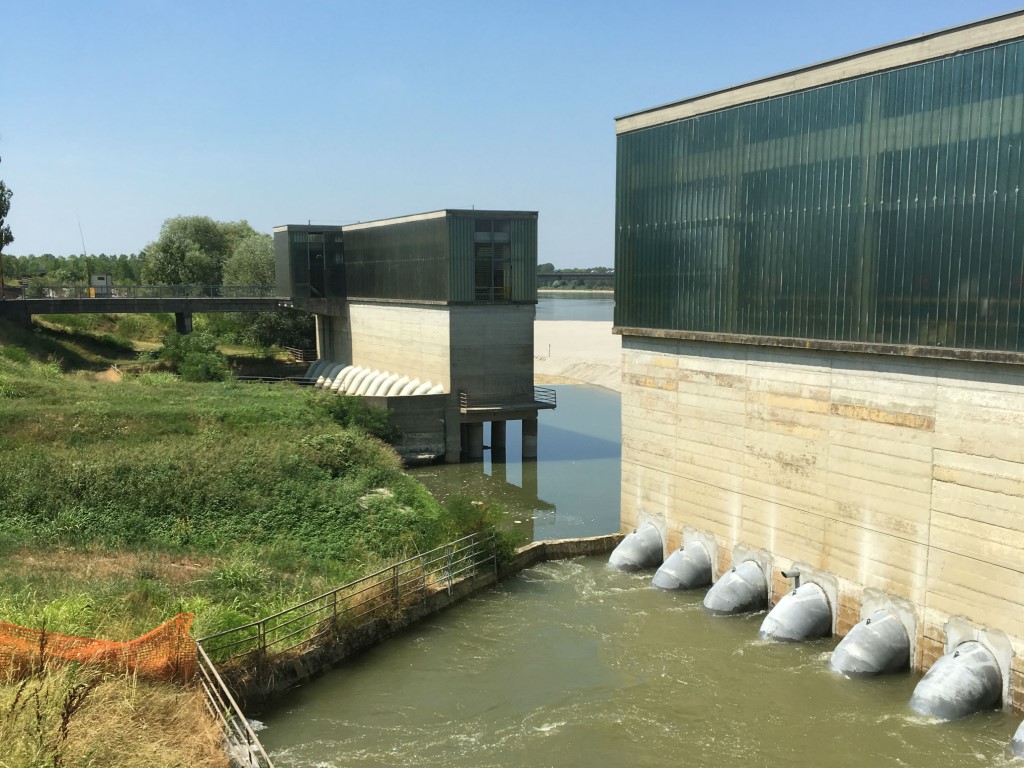A bit of history...
The need to provide water for irrigation from the river Po was taken in the early 1900s by the Parmigiana Moglia consortium.
In 1921, the same consortium commissioned the preliminary studies for an irrigation plant.
A few years later (1930) the inauguration of the irrigation system of the Parmigiana Moglia-Secchia reclamation consortium.
At that time the hydraulic condition of the river Po allowed the derivation by gravity of the total flow rate concession, amounting to a total of 60 mc/sec.
The progressive lowering of the riverbed and the consequent reduction of the minimum level of summer lean, starting from the first post-war years led to a progressive reduction of the efficiency of the plant, until the derivation by gravity was
impossible to achieve since the beginning of the years 1950s.
In this case, the Ministry of Agriculture and Forestry financed a first irrigation pumping station, which has allowed to guarantee the irrigation over the next 25 years.
The aforementioned phenomena of progressive lowering of the lean level of the Po river continued in this period to an even more accentuated extent, until the irrigation pumping station was unusable in the mid-1970s.
Following this situation, the Ministry of Agriculture and Forestry financed an additional irrigation pumping station, built in the riverbed, which started operating in 1976, equipped with 28 traditional propeller electric pumps, with vertical
axis, capable of pumping the waters up to a minimum lean level of the Po at an altitude of 15,50 m above sea-level.
During the summer of 1990 was reached the minimum water level allowed for the regular operation of the pumps.
A first adjustment was therefore carried out on the pumping station in question, completed in 1996, which involved the replacement of all the electric-pumps with submersible pumps and a minimum suction level at an altitude of 14.00 m above
sea level.
Starting from the end of the 80s, the lowering of the riverbed and subsequent climate changes laid the foundations for the well-known water crisis of 2003, in which the plant was able to operate for only 50% of the flow under concession, with
such levels to put a strain on the operation of the machines.
Therefore, was born the project to replace the electric-pumps, with new ones capable of guaranteeing operation up to an altitude of Po equal to 13.00 m above sea level.

